|
|
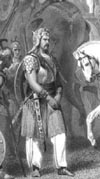 |
==Alexander
the Great swings by (327-25 BCE),
making
a U-turn: watch *his
route* unfold. His travels have taken him through Persia, where he
has conquered the last Achaemenid emperor. (More information than you
could
ever need: *alexanderama*;
*livius*.)
With much difficulty he defeats Porus (from the Vedic "Puru"), ruler of
the northern Punjab region, and makes an alliance with him. But his
soldiers
are on the verge of mutiny, and other local kings keep attacking him.
He
is finally forced to turn back down the Indus and westward again; in a
couple of years he is dead. [*Routes*] |
 |
==Gandhara
(early 300's BCE onward), the region of the upper Indus River valley in
modern Pakistan and on into eastern Afghanistan (*kaladarshan*;
*livius*),
becomes a tremendous center of Greek and Buddhist cultural mingling and
diffusion, as can be seen from its rich archaeological sites,
especially
Taxila (*livius*)
and important sculpture (*ANU*;
*himalayan
art*). |
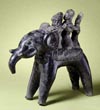 |
==Chandragupta
Maurya (r.321-297 BCE) profits
from
the power vacuum in Gandhara that Alexander has left behind, and maybe
also from personal observation of Alexander's techniques. He founds the
Mauryan dynasty (321-185 BCE), with its capital in Pataliputra (Bihar):
*Met
Museum*. |
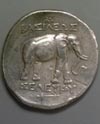 |
==Chandragupta
defeats Seleukos (305
BCE): Seleukos
Nikator, Alexander's satrap in Persia, founder of the huge
Seleucid
Empire (*parthia*),
crosses the Khyber Pass into the Punjab-- where Chandragupta meets him
with a huge army and defeats him. In their peace treaty, Chandragupta
gains
everything east of Kabul, along with Baluchistan. Seleukos gains 500
war
elephants, which he uses successfully the following year against his
rival
Antigonos. Seleukos puts an Indian elephant on some of his coins (*perseus*). |
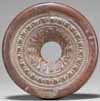 |
==Megasthenes
visits Pataliputra: To
Chandragupta's
court comes Seleukos's emissary, Megasthenes, who is impressed with the
elaborate wooden architecture of Pataliputra (*MSSU*),
and with many other things he sees in India. Later he writes a long
account
of India, which today survives only in fragments: *MSSU*. |
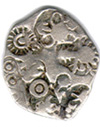 |
==Kautilya's
Arthashastra, the greatest South
Asian
political science text, begins to take shape: *MSSU*.
Kautilya (also called Chanakya), the Machiavelli of South Asia, may
have
helped Chandragupta Maurya to take power (*Manas*),
but the chronology and sources are all a bit murky and the work
probably
evolved over several centuries; *the
India of the Arthashastra*.
|
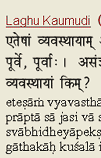 |
==Panini
(300's
BCE?), the first great Sanskrit grammarian (*wiki*):
his pithy, rigorously sequential grammatical rules in the form of verse
sutras are almost untranslatable, so scroll down and have a look at
samples
of the originals: (*taralabalu*).
Panini has the mind of a brilliant computer programmer, twenty
centuries
before the ideal tools came along. *India
as Panini sees it*. |
|
|








